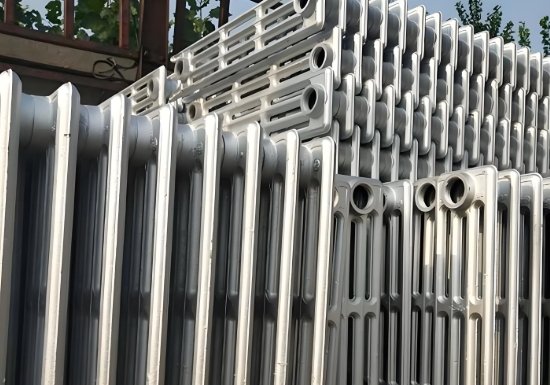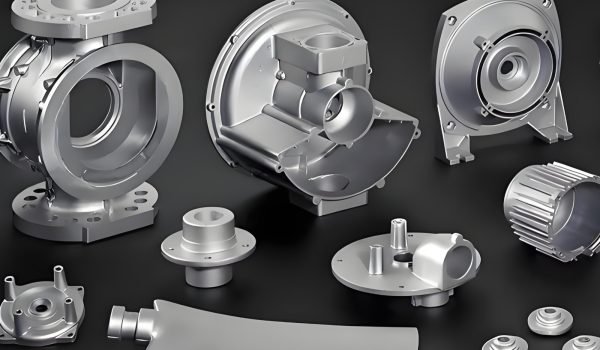Aluminum ranks as the third most abundant metal in Earth’s crust. People often ask if die cast aluminum is safe for daily use. Science shows us something reassuring – aluminum cookware releases tiny amounts into acidic food, just under one-hundredth milligrams per cup.
Die cast aluminum products come from a high-pressure molding process. These products last long and spread heat evenly. Medical researchers have good news too. They’ve mostly dismissed the old fears about aluminum causing Alzheimer’s disease. The human body naturally gets rid of small amounts of aluminum, usually between 30-50 mg. This article explores Is Die Cast Aluminum Safe, the safety aspects, health considerations, and best practices for using die-cast aluminum products.

What Is Die-Cast Aluminum?
Die-cast aluminum is created through a sophisticated manufacturing process where molten aluminum flows into steel molds under high pressure. The process uses pressures between 1,500 and 25,000 psi to produce complex metal components consistently.
The manufacturing happens in several vital stages. The aluminum heats up to about 1220°F (660°C) until it melts completely. The liquid metal then gets injected into pre-designed steel molds, which experts call dies. These dies come in two halves to make product extraction easier.
Aluminum production works best with the cold chamber die casting method. The melting pot stays separate from the main chamber, and the molten aluminum moves from the pot into the die under substantial pressure. This high-pressure injection fills the mold quickly, which is vital for uniform solidification before any part hardens.
Die-cast aluminum parts have unique properties that make them different from other manufacturing methods. These components offer superior dimensional stability, especially when creating intricate shapes and thin walls. The process lets manufacturers create walls thinner than 13 mm, which gives them great design flexibility.
Die-cast aluminum’s material properties make it valuable in a variety of industries. The material resists corrosion well, stays strong at moderately high temperatures, and conducts heat and electricity efficiently. It weighs just 2.67g/cm3, making it quite light. The thermal conductivity reaches 120 W/mK, which makes it perfect for applications that need quick heat dissipation.
Die casting shines in its ability to produce thousands of similar parts within specified tolerances. The surface finish needs minimal post-processing, which reduces time and costs. These components are also more durable and dimensionally stable than parts made through other manufacturing methods.
Is Die-Cast Aluminum Safe for Cooking?
Die-cast aluminum cookware’s safety mostly depends on how you use and maintain it. Health Canada reports that people usually consume about 10 milligrams of aluminum each day through food. Aluminum cookware adds only 1-2 milligrams to this total. Adults can safely consume more than 50 milligrams of aluminum daily without any bad effects, according to the World Health Organization.
All the same, you should take some precautions with die-cast aluminum cookware. Acidic foods like tomatoes, citrus products, and leafy vegetables tend to absorb more aluminum from the cookware. You should avoid storing or cooking acidic ingredients in aluminum pots and pans for long periods to reduce aluminum leaching.
Die-cast aluminum cookware becomes safer by a lot through special treatments. Aluminum creates a protective oxide layer naturally when it meets oxygen, which protects against more oxidization. This barrier gets better through anodization – a chemical process that makes the protective coating thicker and harder, becoming part of the cookware.
Die-cast aluminum products often come with ceramic coatings between 50-1500 mm thick. These surfaces resist scratches well and create another layer of protection against chemical leaching. The best safety comes from picking high-quality, PFOA-free coatings.
How to keep your die-cast aluminum cookware safe?
Here’s how to keep your die-cast aluminum cookware safe:
- Cook at temperatures below 200 degrees Celsius
- Season new cookware with butter or oil after washing it well
- Wash gently by hand and don’t use harsh cleaning tools
- Don’t store food in aluminum cookware for long periods
Scientists have found no evidence linking aluminum cookware to Alzheimer’s disease, which puts earlier worries to rest. So, die-cast aluminum cookware is safe for daily cooking when it’s made properly with food-grade materials and used correctly. Picking well-known brands is vital because low-quality products might contain harmful materials like lead or cadmium.
Health Risks and Safety Considerations
Scientific research shows complex health effects linked to aluminum exposure. The human body naturally contains approximately 30-50 mg/kg of aluminum, and normal serum levels range from 1-3 μg/L. Aluminum plays no role in the body’s metabolic processes, despite its common presence.
Health conditions linked to aluminum exposure raise concerns
Workers in die-casting facilities face significant health risks from occupational exposure. People who breathe large amounts of aluminum dust often develop respiratory problems, which show up as coughing and unusual chest X-rays. The nervous system also suffers when exposure continues over time.
Aluminum affects health conditions because it can:
- Disrupt enzyme activities and protein synthesis
- Alter cell membrane permeability
- Prevent DNA repair
- Increase reactive oxygen species production
Human health and aluminum: What science tells us
Research shows that 95% of aluminum we consume binds to transferrin and albumin in our blood and ends up being filtered out by the kidneys. Some groups face higher risks than others. Excess aluminum builds up in people with poor kidney function, which can lead to bone or brain diseases.
Scientists have broken down aluminum’s possible connection to Alzheimer’s disease extensively. Alzheimer’s patients’ brains show higher aluminum levels, but researchers haven’t found a clear cause-and-effect relationship.
Safe use and maintenance of die-cast aluminum products
These safety practices help minimize risks:
- Keep work areas well-ventilated when processing die-cast aluminum
- Wear proper protective gear, including gloves and safety goggles
- Clean and organize workspaces to lower exposure risks
Regular equipment checks are vital for industrial applications. Equipment condition and placement need inspection before operations begin. Clear reporting systems help spot potential dangers early.
OSHA’s standards limit aluminum dust exposure to 15 mg/m3 for total dust and 5 mg/m3 for respirable fraction during an 8-hour workday. These guidelines serve as key workplace safety standards.

Is Die-Cast Aluminum Safe for Industrial and Automotive Use?
Die-cast aluminum’s remarkable strength-to-weight ratio and versatile properties make it a popular choice in industrial applications. Aluminum components make up about 25% of vehicle production. European cars saw their aluminum content double between 1990 and 2000.
Die-cast aluminum parts are a great way to get engine blocks, transmission cases, and suspension components in the automotive industry. The material’s light weight helps save fuel, as aluminum-lithium alloys make aircraft 15% lighter. Modern aircraft use 75-80% aluminum components.
Safety remains the top priority in industrial applications. Die-casting facilities see injury rates that are twice as high as other private industries. Workers face these common hazards:
- Burns from molten metal and hot castings
- Cuts and abrasions from castings and flash
- Slips and falls due to poor housekeeping
- Sprains, strains, and fractures from work conditions
Manufacturers use complete safety protocols to alleviate these risks. Quality control includes thorough testing and inspections to find defects. Good ventilation systems play a vital role in removing dangerous emissions and fumes.
Die-cast aluminum’s effect on the environment needs attention. Metal die casting adds to air pollution through emissions that affect acidification and human toxicity. Aluminum’s 100% recyclability without losing its properties makes it environmentally friendly.
Giga-castings face several manufacturing problems:
- Higher scrap rates than cold forming processes
- Hard to keep tight tolerances with varying wall thicknesses
- Complex cooling patterns within dies
- Getting defect-free castings is difficult
Die-cast aluminum’s industrial safety depends on following safety protocols, proper training, and regular equipment maintenance. First aid programs, emergency response teams, and incident reporting systems are the foundations of complete safety management. Manufacturers can make use of aluminum’s benefits while keeping workers safe and supporting green practices by paying close attention to these measures.

Best Practices for Safe Use of Die-Cast Aluminum
Die-cast aluminum components perform better and last longer with proper safety measures. Quality control in professional die-casting facilities involves regular component inspections and testing. These steps detect defects early and give the final products maximum corrosion resistance.
Clean surfaces play a crucial role in industrial applications. Adhesion and surface finish quality suffer from contaminants, oils, grease, or dirt. The surface might need sandblasting or grinding to achieve smoothness and remove defects.
Manufacturing facilities need complete safety protocols:
- Mandatory use of personal protective equipment (PPE) including gloves, safety goggles, and face shields
- Regular inspection of equipment condition and placement
- Proper ventilation systems for toxic fume removal
- Clear incident reporting systems
Component durability improves with surface treatment. Professional die-casting companies use heat treatments, solution heat treatments, and aging processes to boost corrosion resistance. They also apply surface treatments like anodizing, chromate, or powder coating based on specific needs.
Quality control goes beyond the manufacturing process. Die-cast aluminum parts need proper maintenance to avoid deterioration. A mild soap wash and thorough rinse removes dirt and debris effectively. Regular checks for loose screws, bolts, and damage signs help catch problems early.
Manufacturers should follow these steps to achieve the best results:
- Select high-quality aluminum alloys containing silicon, copper, magnesium, or zinc
- Employ precise and controlled manufacturing processes
- Design molds carefully to minimize defects like porosity
Storage conditions substantially affect how long components last. Components stay rust and corrosion-free when kept off the ground. Breathable material covers protect parts during storage. Professional die-casting companies suggest using proper touch-up methods and following manufacturer’s repair guidelines when surface damage occurs.
Conclusion
Research proves that die-cast aluminum remains safe with proper manufacturing and usage. People get minimal aluminum exposure from cookware and industrial uses. These amounts stay far below WHO’s safety limits. Modern production methods like anodization and special coatings substantially boost die-cast aluminum’s safety.
Safety matters go beyond personal use. Industrial settings need strict protocols, routine upkeep, and the right protective gear to keep workers safe. Die-cast aluminum proves valuable in automotive and aerospace sectors. The material delivers excellent durability and lightweight properties while being completely recyclable.
Good maintenance keeps die-cast aluminum safe and performing well over time. The material’s protective qualities last longer with regular cleaning, proper storage, and following manufacturer’s guidelines. Thorough quality checks throughout production protect both workers and end-users.
Die-cast aluminum has become a trusted material choice backed by 50 years of research and tech advances. Users can safely add die-cast aluminum products to their daily routines by following usage guidelines and maintenance protocols.




